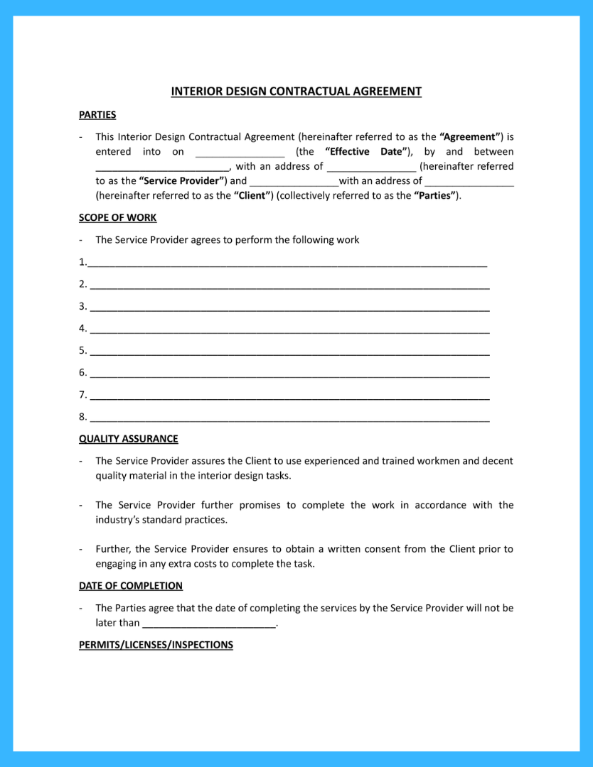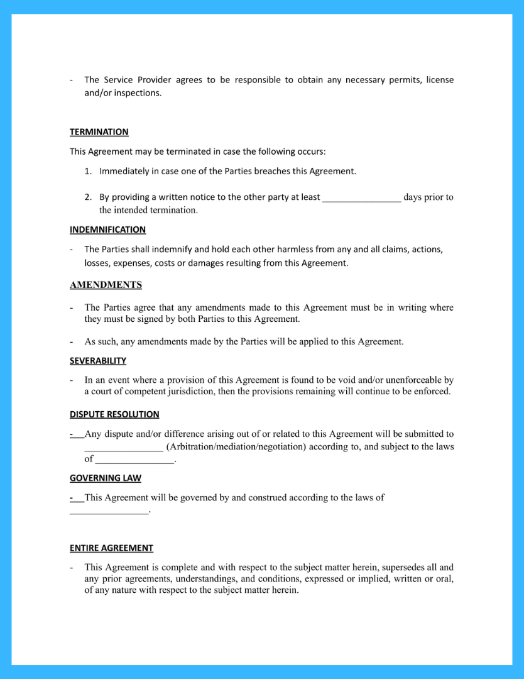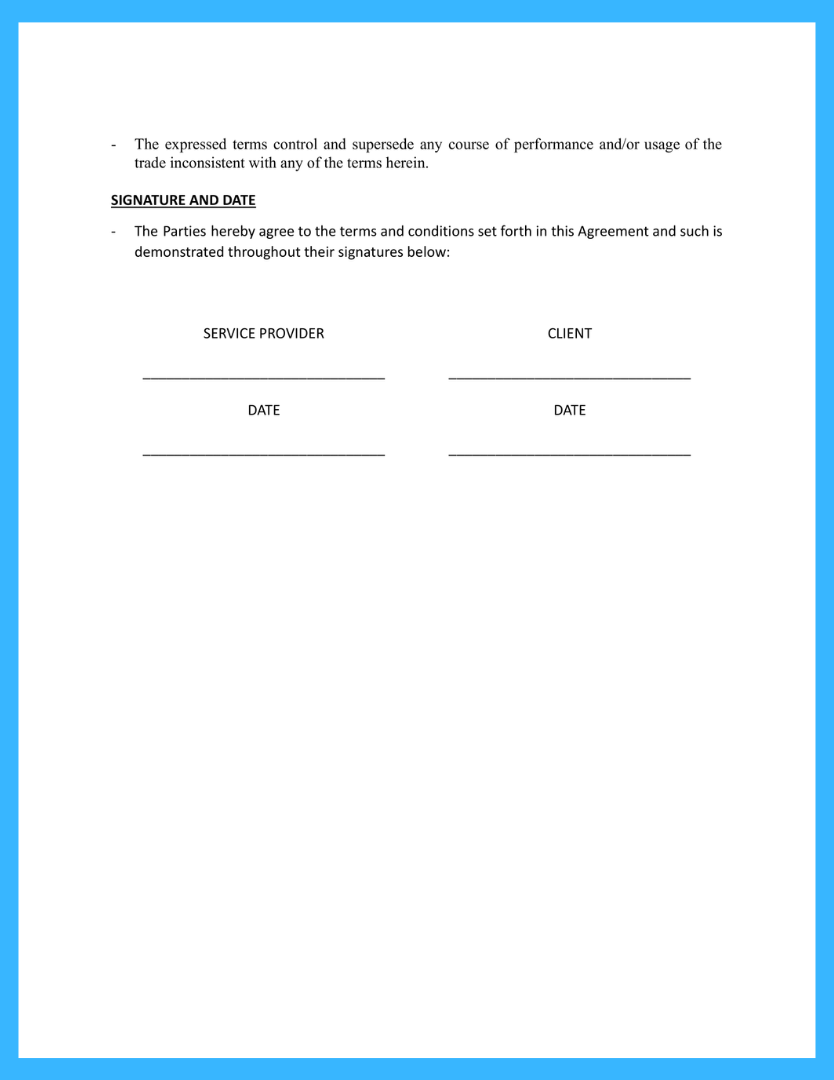
Decorating a space is an art form that requires expertise. Ensuring your artistic visions translate into legal assurances can be tricky.
Let’s dive into the world of interior design contracts to understand how they create a reliable, legally binding framework for your interior design business needs.



At its core, an interior design contract is a legal document outlining the terms and conditions of the services offered to a client. This detailed agreement captures everything from the scope of the work, the agreed payment terms, and timelines, to intellectual property rights associated with the interior design project.
It goes beyond a written contract and acts as a comprehensive guide for the client and the interior designer. It lays out responsibilities, boundaries, and expectations for all parties involved. It’s a legally binding document, meaning it’s enforceable in a court of law, adding a layer of security and professionalism to your interior design business.
An interior design contract aims to prevent misunderstandings and disputes down the line by clearly defining roles and obligations. It’s like having a roadmap for the entire agreement between the property owner and the service provider .
DISCLAIMER: We are not lawyers or a law firm and we do not provide legal, business or tax advice. We recommend you consult a lawyer or other appropriate professional before using any templates or agreements from this website.
As an interior designer, your skills transform spaces into works of art. Yet, like any other business, you need safeguards. That’s where an interior design contract comes into play.
An interior design contract is more than just a formalization of your business arrangement with your client; it serves as your shield. It ensures you get paid for your services rendered, protects you from out-of-pocket expenses, and provides a course of action in case of design flaws or other unforeseen circumstances.
The contract agreement is crucial because it outlines your responsibilities and your client’s. This clarity helps avoid potential disagreements or misunderstandings that could sour the working relationship. The interior design contract sets expectations right at the start, ensuring a smooth process from the first brush stroke to the final reveal.
Furthermore, with a legally binding document like an interior design contract, the client and the designer have legal recourse if things don’t go as planned. It protects both parties, giving peace of mind and fostering a sense of trust in your business relationship.
Consider this contract the foundation stone that bridges your creative imagination and your client’s expectations, ensuring a harmonious and successful collaboration.
Understanding when to use an interior design contract is as important as knowing why you need one. So, when should you bring in the legally binding document to cement your business agreement? The answer is simple: at the onset of every interior design project.
When you and a client agree to embark on a new interior design project, you should draft that contract. It’s not just about having a signed contract; it’s about having a detailed agreement that comprehensively covers all aspects of the project.
Whether a large-scale commercial space redesign or a small home improvement project, an interior design contract agreement becomes indispensable. Remember, every project, regardless of size or complexity, involves time, effort, and resources.
Using an interior designer contract template is essential even if you have had previous successful dealings with a client without one. Why? Even the best working relationships can hit rough patches, and it’s always better to be prepared than to be caught off guard.
What’s more, utilizing an interior design contract template can speed up the process. With the core sections already laid out, you can quickly customize it to suit your specific project needs. It’s all about saving time, reducing room for error, and reinforcing your professional standing.
You’ll ensure everyone is on the same page and set the stage for a smooth, successful project.